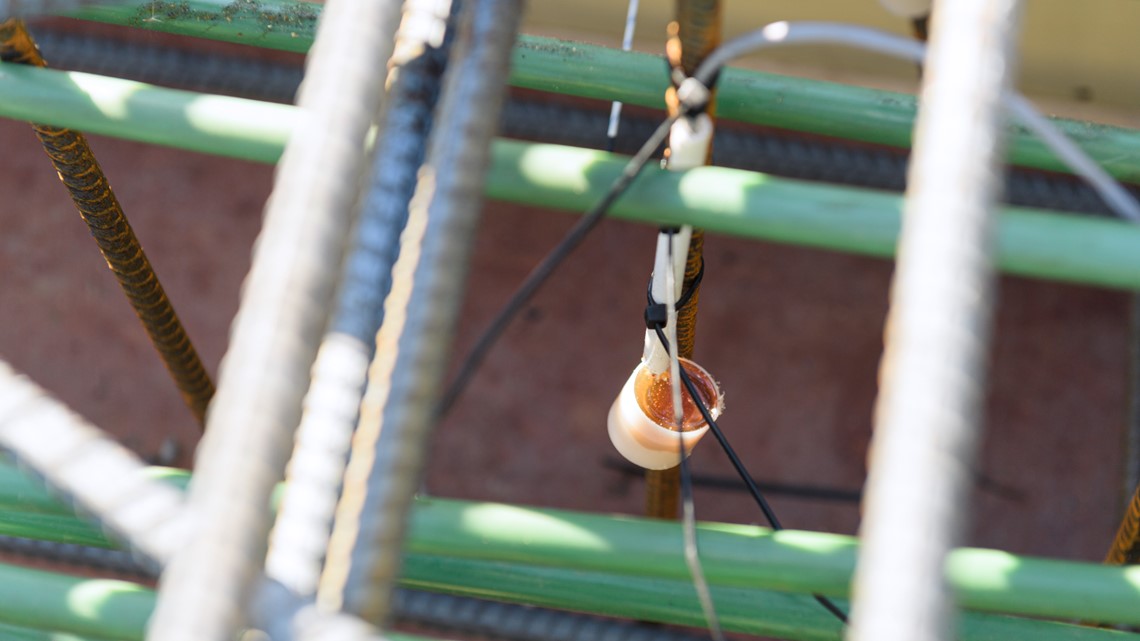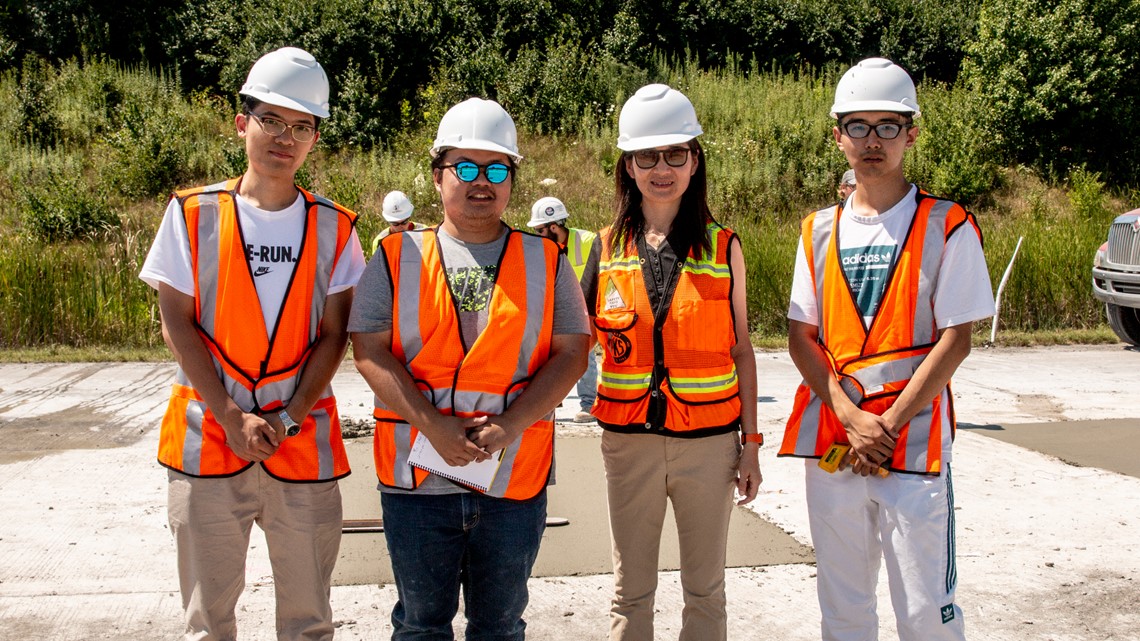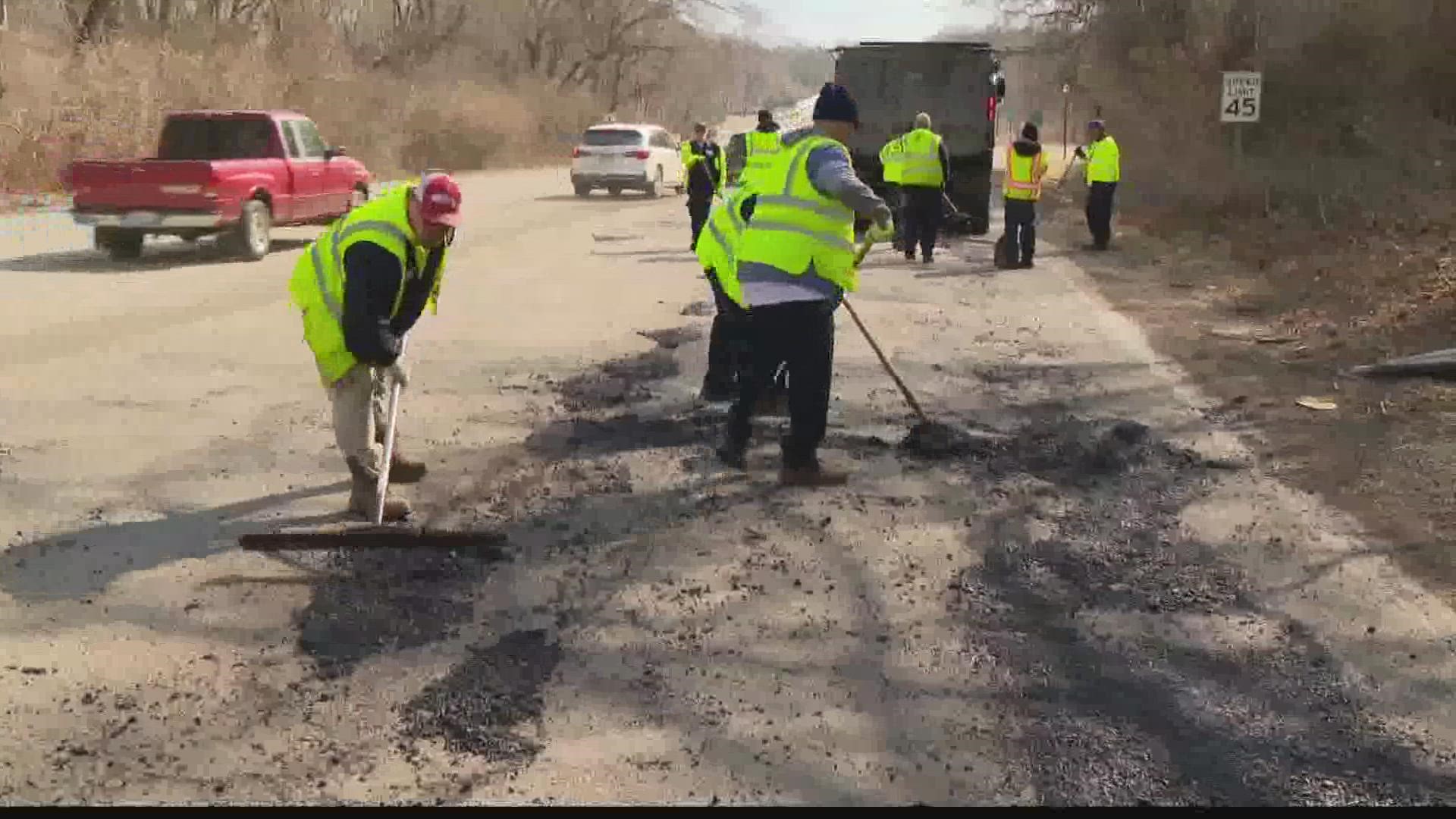INDIANAPOLIS — Every year, Hoosiers are dealing with the same headache - potholes.
Indianapolis Department of Public Works crews across the state fill tens of thousands every year, but they always come right back.
In fact, new research shows 40% of U.S. roads are in poor condition, costing drivers $141 billion a year, which is about $621 per driver.
13News asked an expert at Purdue University’s Lyles School of Civil Engineering what makes our roads so bad.
“It really impacts our lives in a lot of ways,” said Luna Lu, associate professor and an American Concrete Pavement Association Scholar at the school.
Lu said our road conditions really depend on three things: traffic volume, weather and premature exposure to newly paved roads.
That’s why Lu and a team of researchers at Purdue came up with road sensors that are embedded in concrete and monitor the strength of the pavement. She said this helps, because it can take time for concrete to be ready for heavy traffic and stress.
The sensors can also predict when a road needs to be replaced before failing.


Right now, sensors are being by the Indiana Department of Transportation in spots along interstates. The Purdue team is also working to pilot the sensors in Colorado, Texas, Missouri and Tennessee.
“So, what the technology does is put the sensor in the concrete and accurately measure when the concrete is secured enough and ready to open to traffic,” said Lu.
Despite this technology, potholes are still an annual problem, mostly due to the pavement being used. Lu said the decision comes down to cost and availability.
“We cannot use a very strong material such as graphene or diamond to pave a road, so economically, it has to be reliable and another thing, it has to be locally available,” Lu said.


To solve the issue, Purdue researchers are developing concrete that can "heal itself" using sand-like materials that can absorb water and cause a chemical reaction that seals off cracks.
“We can get concrete with any crack less than 75 millimeters to be cured, completely healed within a week,” Lu said.
It’s new developments like this that make Lu confident in a new generation of roads, but she said those improvements will take some time.
On Monday and Tuesday, Indianapolis DPW crews filled more than 17,000 potholes around the city.
What other people are reading:

